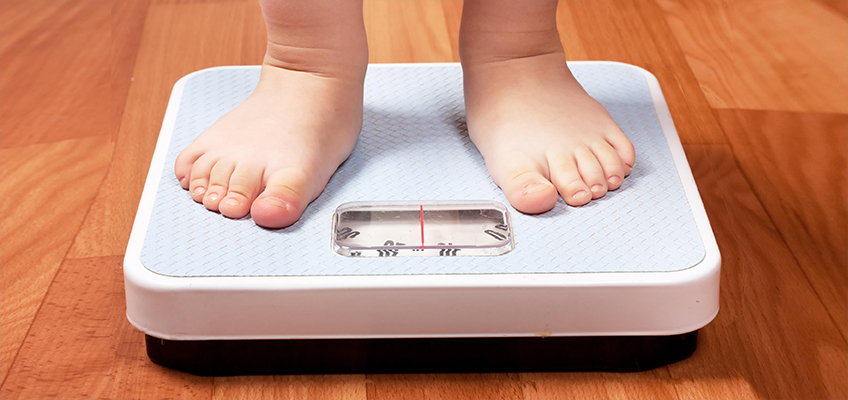
Currently, an estimated 1 billion people – that’s a little over 1 in 7 – are overweight, and at least 300 million of them are classified as clinically obese, the World Health Organization (WHO) reported. Decades of monitoring the weight of the world clearly show the number of overweight and obese people is rising fast and the crisis is as severe in many parts of the world among children and adolescents ages of 2-19 as it is among adults.
Childhood Obesity:Millions Face Severe Health Risks
“Childhood obesity is already epidemic in some areas and on the rise in others,” the WHO reported. “An estimated 22 million children under 5 are estimated to be overweight worldwide.”
According to the U.S. Office of the Surgeon General, more than 12.5 million, or 17.1%, of American children and adolescents are overweight. Health professionals say it is imperative children remain active during their formative years and receive continual adult guidance in their eating habits and making good nutrition choices.
The Obesity Society notes on its website that obese children are at much greater risk than other children of Type 2 diabetes, hypertension, sleep apnea and orthopedic problems. They also are more likely to be obese as adults, thus increasing the risk of a number of diseases, among them stroke, cardiovascular disease and some cancers.
Besides the adverse effects on physical health, childhood overweight and obesity can cause emotional and psychological scars. These children and adolescents frequently endure years of social isolation, teasing, bullying and ridicule among their peers, as well as poor self-image, depression and other emotional and psychological problems that can affect their entire lives.
Did you know?
- Overweight adolescents have a 70% chance of becoming overweight or obese adults.
- The number of overweight children has more than tripled over the past three decades.
- Studies show nearly 34 percent of children and teens in America are either overweight or at risk of becoming overweight.
- Research has shown parents are often their children’s most important role models. If children see caregivers enjoying healthy foods and being physically active, they are more likely to do the same.
– From the U.S. Office of the Surgeon General.
Shifting Away From Emotional Eating
HMI researchers, along with many weight-loss specialists and health professionals, believe today’s weight-control programs neglect the No. 1 cause of overeating and obesity: Emotional eating, which is typical of a majority of overweight and obese children and adults alike, is the unchecked habit of using food to cope with our feelings.
“Experts now agree that about 75% of overeating is caused by emotional eating, which means that a lot of us are using food to cope with our feelings,” observes the HeartMath book, Stopping Emotional Eating. “In today’s high-stress society, many of us, adults and children, eat high fat or high sugar foods to soothe our emotions or temporarily relieve our stress and anxiety.”
Researchers at HMI believe that stress and negative emotions are major contributing factors to emotional eating and the medical community concurs with this assessment.
HeartMath’s heart-focused techniques and emWave® technology, because they were specifically developed to help people monitor and manage stress and emotions, happen to be uniquely suited to helping people with weight control problems. HMI officials say that these techniques and technology are geared toward teaching people to reconfigure their emotional diets and shift away from emotional eating to intuitive eating. Intuitive eating means listening to the heart’s intuitive discernment on what, when and how much to eat, Stopping Emotional Eating co-writers Doc Childre, founder of HeartMath, and psychologist Deborah Rozman explain in the book.
“The basic understanding of emotions in the book is as true for children as it is for adults,” said Rozman, co-CEO with Childre of the HeartMath technology company, Quantum Intech Inc. “But children need help identifying their stress triggers that result in comfort eating. Then they need help finding other ways to handle their emotions and stress.” (Rozman suggested parents closely guide children under age 14 through the Stop Emotional Eating book, especially concepts like intuitive eating, and in learning and using HeartMath tools.)
This program is drug-free and perfectly suited to supplement any diet/weight-loss program individuals might be using.
Emotion Self-Regulation
HMI officials say that with the guidance of parents or adult caretakers children can be just as capable as adults in learning to monitor and self-regulate stress and emotions and improving their health, academic performance, social lives and overall well-being.
Investigating the physiology of emotions has been at the forefront of HMI’s research for nearly two decades. During that time, a wealth of studies incorporating the HeartMath System of tools and technology have demonstrated that recognizing the ways negative emotions are affecting behaviors and health and learning to replace them with positive emotions is achievable in a relatively short amount of time.
One important study that illustrates how school children at a campus near Miami, Florida were able to begin this transformation academically and in other ways is The Impact of an Emotional Self-Management Skills Course on Psychosocial Functioning and Autonomic Recovery to Stress in Middle School Children.
5 Tips for helping children with self-regulation to maintain a healthy weight†
- Guide children in learning to recognize and articulate what it is they are feeling. It’s important to understand what triggers provoke excessive eating.
- Help your children learn and apply emotion self-regulation techniques – to bring the emotions into balance.
- Encourage and demonstrate attitudes of appreciation and forgiveness – help children find balance between not caring and perfectionism in the things they do.
- Limit sedentary time to a combined total of two hours for watching TV, video games and nonschool-related Web surfing.
- Set an example for children with good nutrition choices and habits and plenty of outdoor physical activity.
† Adapted from Tips for Parents – Ideas to Help Children Maintain a Healthy Weight, located on the U.S. Centers for Disease Control and Prevention website.
Committed to Children
“The HeartMath Institute cares deeply about the health and well-being of children and has many ideas, programs and services designed to make their growing-up years healthier and happier,” IHM President Sara Childre said.
One of IHM’s recent efforts to provide a resource for children and those that care for them, at home, school or in the community, is the HeartMath My Kids Facebook page for caretakers of children, including parents, grandparents, day-care providers, teachers, counselors, principals and psychologists. The page is aimed at helping kids manage and overcome the anxieties, fears, emotional turbulence and other issues they face. “I encourage people to visit the HeartMath My Kids Facebook page and become fans if they’d like to stay informed about our work on behalf of children,” Childre said.
Among the HeartMath tools and technology that have helped thousands of children self-regulate stress and emotions are HeartSmarts®, the Quick Coherence Technique for Ages 12-18 and the emWave Pro and Family Wellness Bundle, which includes fun games children can play on their home computers.
Determining Healthy Weight† for Children and Teens
A common tool for determining your child’s optimal healthy weight is the body mass index, which assesses height, weight and age to make this calculation. You can get the information you need to make informed decisions about weight management through the following links on the U.S. Centers for Disease Control and Prevention website. BMI calculator for children and teens.
† The Centers for Disease Control gives these BMI assessment guidelines: overweight – body mass index (BMI) of 25 or more; obesity – BMI of 30; severe obesity – BMI 40.

